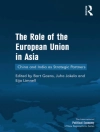What is the story behind the paradoxical survival of small and weak states in a world of great powers and crude power politics? And what explains the dramatic rise and fall in the number of states overtime, following no consistent trend and not showing an immediately obvious direction or pattern? The answers lie at the system-level: Small states survival is shaped by the international states system. Small state survival and proliferation is determined first and foremost by features of and dynamics created at the states system. As the states system changes and evolves the chances for small states to survive or proliferate change as well. In fact, a quantitive investigation confirms this, showing that over the course of more than 3½ centuries, the number of small states did fluctuate widely and at times dramatically.
Table des matières
1 Introducing small state survival as a historical phenomenon
2 Defining and quantifying the small state
3 Power politics and small state survival: the classic balance of power, 1648–1814
4 Small state survival in a system of collective hegemony: the concert system, 1815–1918
5 Small state survival and proliferation in twentieth-century systems of collective security and global governance
6 The story of small state survival: past, present, and future
Index
A propos de l’auteur
Matthias Maass is Associate Professor of International Relations at Yonsei University’s Graduate School of International Studies in Seoul, Korea












